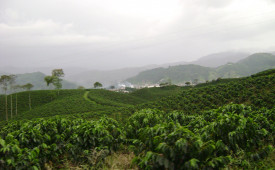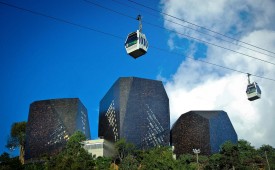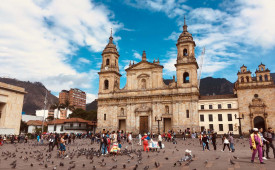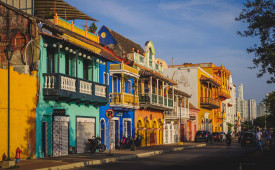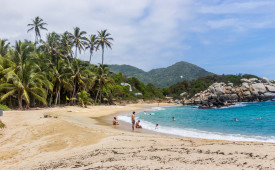-
Latin America
Latin America
- Countries (hidden space)
- Galapagos & Ecuador
- Guatemala
- Mexico
- Panama
- Peru
- Popular Attractions
- Machu Picchu
- Inca Trail
- Easter Island
- Galapagos Islands
- Patagonia
- Rio de Janeiro
- Iguazu Falls
-
Africa
Africa
- Spacer Africa
- South Africa
- Zimbabwe
- Popular Attractions
- Cape Town
- Okavango Delta
- Sossusvlei Dunes
- Victoria Falls
- The Kruger
- The Garden Route
- Masai Mara
-
Asia
Asia
- Spacer Asia
- Laos
- Sri Lanka
- Uzbekistan
- Vietnam
- Popular Attractions
- Taj Mahal
- Lion Rock (Sigiriya)
- Angkor Wat
- Ha Long Bay
- Kyoto
- Europe & Middle East
-
Destinations
- Latin America
- Argentina
- Bolivia
- Brazil
- Chile
- Colombia
- Costa Rica
- Galapagos & Ecuador
- Guatemala
- Mexico
- Panama
- Peru
- Asia
- Borneo (Malaysia)
- Cambodia
- India
- Japan
- Laos
- Sri Lanka
- Uzbekistan
- Vietnam
- Middle East
- Jordan
- Southern & East Africa
- Botswana
- Kenya
- Namibia
- South Africa
- Zimbabwe
- Europe
- Slovenia
- All Holiday Destinations
- Contact Us
-
About
About
Llama Travel provides high quality holidays at the lowest possible prices.
99% recommend us Lower prices - guaranteed Financially protected by ATOL
Travelling to Colombia
Travelling in Colombia
-
What to pack - Colombia
Due to its proximity to the Equator, lowland Colombia has a tropical climate; however, temperatures are lower in highland areas, including Bogotá and the coffee region, and vary significantly throughout the country. The coast is usually hot and humid, often with daytime highs of over 30°C, whilst in Bogotá night-time temperatures can drop to lower than 10°C. Therefore, a variety of clothing, suitable for hot and cold weather, is advisable. Rain is possible throughout the year, and can be heavy, so waterproofs are recommended. The wettest months are generally April to June and October to November. The coastal dry season is from December to March, during which there is little rain. Insect repellent is advisable, especially for the coffee region and the Caribbean areas.
Electricity in Colombia is 110V, and plugs are of the flat two-pin type.
We recommend you carry a copy of your passport with you at all times.
Please bring any medication you may require from the UK.
You can bring whichever luggage you feel most comfortable with: suitcases, soft bags and rucksacks are fine.
-
Budgeting for your stay
All hotels include breakfast, and other meals are included on some tours and excursions. However, generally, you will need to arrange your own lunches and dinners. We recommend budgeting approximately US$15 – 20 for a meal, although many restaurants have excellent value set lunches for less than this. Hotel restaurants, especially in superior hotels, can be more expensive. Additionally, there are many upmarket restaurants, particularly in Bogotá and Cartagena, where you should expect to pay up to US$50 per person, or possibly more.
Bar prices are similar to the UK and a small bottle of beer usually costs around US$2-3 in a hotel bar. This can be higher in more remote areas.
-
Tipping
If you receive good service, you may want to leave a tip. This is completely at your discretion. For general excursions, if you want to tip guides, US$3 – 5 per person per day is usual if you are in a group. Approximately US$2 - 3 is usual for drivers or transfer staff. As tipping is not necessarily normal in restaurants, please give any tips directly to the person you would like to tip to ensure that they get it. In certain restaurants, a 10% service charge may be included in your bill, or the bill may mention that service is not included.
-
Food
Whilst in Bogotá it is possible to sample regional specialties from throughout Colombia. Colombian food is quite diverse, with the coast, the Andes and jungle favouring different ingredients, allowing for an interesting mix. Many of these dishes can be found in the historic city centre, and Calle 11 has a number of tourist-friendly restaurants with menus in Spanish and English. One of the most popular dishes from Bogotá itself is ajiaco, a tasty soup containing shredded chicken, potatoes and tubers, and corn on the cob, served with rice and avocado. Another interesting and unique choice is chocolate santerfereño: hot chocolate served with cheese (to melt in the chocolate) and two types of bread. Cheap set menus can be a good option in more traditional restaurants, often with 3 courses and a drink for under £5. Bakeries, fresh fruit juice shops and street stalls are plentiful. Many of the upmarket restaurants featuring international cuisine are found in the newer Zona Rosa district (Zona G, Zona T and Parque 93).
The most well-known dish to hail from Medellín is ‘bandeja paisa’, a tasty, although not so waist-friendly, plate showcasing many of Colombia’s favourite foods. The dish includes a generous variety of ingredients: red beans with pork, rice, a fried egg, plantain, minced meat, chorizo, an arepa (a type of corn flour pancake), black pudding, pork scratchings, avocado and hogao sauce. The bandeja, or platter in English, originated in the Andean region, so Medellín is the best place to try this much-loved meal.
Hotel Sazagua in the Coffee Region has a restaurant offering international cuisine with a regional twist, and dishes based on family recipes. There are also reasonably priced restaurants in the area; however, a taxi ride is needed. Trout is the regional specialty.
The restaurants in Cartagena offer a rich culinary variety, combining flavours and ingredients from the Caribbean, Europe, Africa and Asia. Lunchtime set menus offer good value for money, whilst high-end international cuisine is common in the historic centre. Fish and coconut rice are typical of the Caribbean region, whilst snacks include varieties of arepas (corn flatbreads), patacones (fried plantain) and fresh tropical fruit juices.
There are several restaurants in Tayrona National Park, offering regional snacks, local and international food and drinks at reasonable prices. It is also possible to bring food and soft drinks into the park. Fish and seafood are the specialties of this area.
-
Money
The currency in Colombia is the Colombian Peso. Travellers should take local currency or US dollars and not UK sterling, which is not widely accepted in any form. Credit and debit cards (Visa, MasterCard) can be used in many shops and restaurants, and can also be used to withdraw money from cash machines. There are cash machines in the centre of Bogotá and Cartagena. Please note that it can be difficult to use US dollar notes which have even the smallest tear. When changing US dollars into local currency, always use a reputable place to change: banks, hotels or exchange shops. Do not change money on the street if you can avoid it.
When travelling to some of the more remote areas (e.g. the Tayrona National Park), it is advisable to take cash, as it can be difficult to withdraw or change money, or change travellers cheques. If taking travellers cheques, a high commission may be charged, especially if changing directly into dollars. Some hotels do not change travellers cheques so you may need to change them in a bank or exchange shop, therefore, please bear in mind opening hours.
It is always recommended to inform your bank that you are travelling abroad and to which countries. This will allow them to authorise money withdrawals on your account when you are away. Some banks say that this is not necessary; however, we would still recommend contact with your bank as in some cases people have had difficulty in withdrawing currency.

